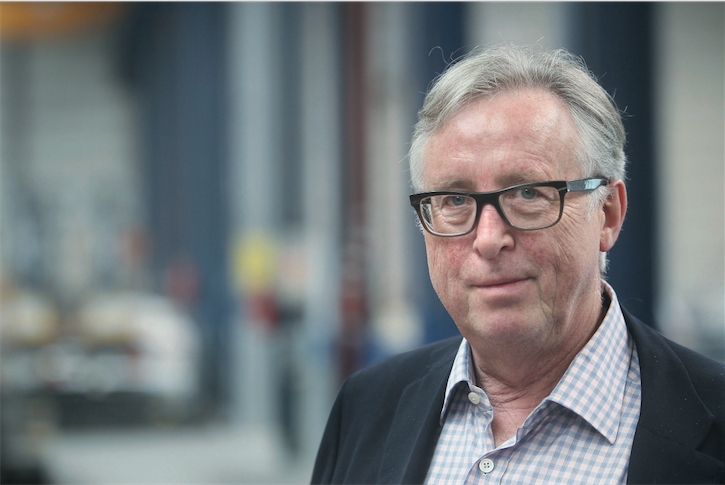“There is a difference between looking at an artwork in the flesh and seeing it on the internet. For me, viewing art is also linked to visiting a city and getting to know the culture of a region.”

The Collection
When did you start collecting art and what were the reasons? Do you still remember the first artwork you purchased and do you still own it?
At the end of the 1980s I made occupational travels through Italy and visited many galleries. The first works I purchased were colourful Italian oil paintings and I still own them today, but I believe that I wouldn’t buy these pieces today.
Today you are focusing on Chinese artists, which is kind of unusual for a German collector. When did you choose to collect Chinese artists?
I am not completely focused on collecting Chinese artists but Chinese artists form a major part of my collection.
Since 2004 I was professionally active in Shanghai. During this time I got to know Lorenz Helbling, the founder of Shanghart and I discovered my love for Chinese contemporary art. Even today I visit Lorenz’s gallery whenever I have time and I am very happy that I met him during this time.
Are you more focused on renowned or emerging artists?
I don’t really have a focus. I collect paintings, sculpture and photography. 10 years ago, I would have answered that I do not collect photography, but things change. Today, a major part of my collection is photography and I also started to cautiously collect videos and installation art. Artworks have to affect me, no matter which medium they belong to.
So, when does somebody become a collector?
I started to see myself as a collector when I began purposely travelling to art fairs and art events. Today, I trace many artists and gallerists and maintain contact with them. Over time, I built rapport with various artists and I also support them financially to realise major projects.
Our analysis has shown that compared to other collector markets like China or the US, German collectors do not seem to be willed to pay as high prices for blue chip artworks than other markets. Do you think this is true? Do you think that this progress is linked to different mentalities?
I think that the phenomenon is linked to the relationship between the collector and money. In the US, many investment bankers ran into money quickly and on this account they are set to invest vast amounts of money into art. By contrast, German collectors have different relations to money.
On 22nd of March you will open an exhibition in Berlin, which presents your collection. Why did you choose to show it in Berlin and what makes Berlin so attractive for art collectors?
Berlin is the cultural capital of Germany. Many international artists are living and working in Berlin and also many high-level galleries are situated in Berlin.
Since I had the possibility to show my collection in a large space in Berlin, I chose to seize the opportunity. Most parts of my collection are located in a depot, which is why I published three books on my collection. I am really glad that I can now show my collection in an exhibition space.
Some gallerists and dealers told us that they are not traveling to art fairs anymore and thus use other channels to sell their artworks (e.g. internet). How do you, as a collector, see the future developments of art fairs?
I agree. There are definitely too many art fairs. During the last few years, I was a regular guest at Art Basel, Art Basel Hong Kong and Art cologne. I have also been to the FIAC Paris and the Paris Photo. In the end, I am very selective regarding the attendance of these art fairs.
Many collectors are presenting their collection online. Are you planning to focus more on communicating your collection online?
A friend of mine, Lutz Teutloff, is presenting his collection online. I belong to a generation of collectors who is not totally connected to the internet. I also couldn’t imagine to virtually “walk” through an exhibition online. In the end, there is a difference between looking at an artwork in the flesh and seeing it on the internet. For me, viewing art is also linked to visiting a city and getting to know the culture of a region.
When I decided to make the exhibition in Berlin, I noticed that there are many coherences and frictions between the artworks in my collection. In my opinion, this can only happen to you if you are standing in a room and looking at your artworks in the flesh.
Also, many collectors are working together with museums. Can you describe your involvement in the MARTa Herford?
I am a foundation member of the MARTa Herford because the museum was looking for a private-public partnership. Hence, I own a minor share of the MARTa and I am also the president of the circle of friends of the MARTa. Moreover, my foundation is supporting the museum and the city. We initiated a price and we also donated a sculpture to the city.
With regard to the relationship of private collectors and public museums: do collectors assume a certain responsibility by presenting art to the public?
I think there is a responsibility. Nevertheless, a public museum has a different role compared to a private collector. A private collector spends his own money whereas a public museum uses public funding to acquire artworks. I, as a private collector, am really looking forward to seeing the reactions to my exhibition of the official curators in Berlin.
Read more about:





